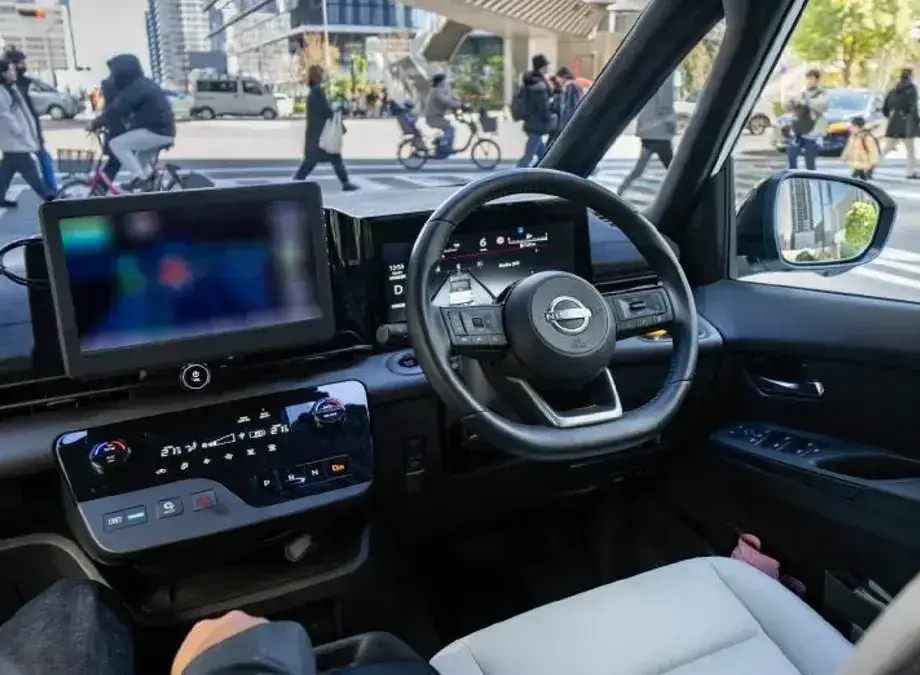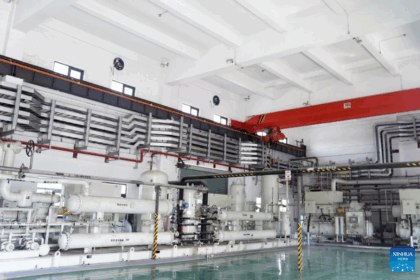The Global Race for Autonomous Driving: Where Does Japan Stand?
Autonomous driving technology is rapidly advancing worldwide, with the United States and China leading the charge. Companies like Waymo (under Google) and Cruise (under General Motors) in the U.S., and Baidu, WeRide, and Pony.ai in China, have already launched commercial autonomous taxi services in major cities. In contrast, Japan, despite its reputation for technological prowess, is only now beginning to see limited Level 4 autonomous buses cautiously operating on public roads. This growing gap raises a critical question: Why is Japan lagging behind in the global race for autonomous driving?
- The Global Race for Autonomous Driving: Where Does Japan Stand?
- Understanding the Levels of Autonomous Driving
- Key Factors Behind Japan’s Delay
- Comparing Japan, the U.S., and China: Strategic Differences
- Unique Challenges in Japan’s Road Environment
- Societal and Economic Implications
- What Needs to Change? Pathways to Catching Up
- In Summary
Understanding the Levels of Autonomous Driving
To appreciate the significance of this gap, it’s important to understand the levels of autonomous driving. The Society of Automotive Engineers (SAE) defines six levels, from Level 0 (no automation) to Level 5 (full automation). Level 4 vehicles can operate without human intervention in specific conditions, while Level 5 vehicles are fully autonomous in all environments. The U.S. and China are already piloting Level 4 services in urban areas, while Japan remains largely in the experimental phase, with most deployments limited to controlled environments or specific routes.
Key Factors Behind Japan’s Delay
Multiple factors contribute to Japan’s slower progress in autonomous driving. These include regulatory hurdles, technological challenges, societal acceptance, and unique aspects of Japanese national character and business culture. Let’s examine each in detail.
Regulatory and Legal Barriers
One of the most frequently cited reasons for Japan’s delay is the slow pace of regulatory reform. Unlike the U.S. and China, where governments have actively supported large-scale pilot programs and commercial deployments, Japan’s legal framework has been slow to adapt. For example, the revised Road Traffic Act, which allows for limited autonomous vehicle operations, only recently came into effect. Even now, most autonomous driving experiments in Japan are restricted to specific areas and require human oversight.
As Taro Kawano, Japan’s Digital Minister, bluntly stated:
“We cannot avoid calling it a failure of regulation that Japan is behind other advanced countries in introducing autonomous vehicles.”
This regulatory caution is partly rooted in Japan’s prioritization of safety and risk aversion, but it has also resulted in missed opportunities for early commercialization and data collection.
Technological and Data Challenges
Japan’s technological capabilities in automotive engineering are world-renowned, but when it comes to AI and data-driven development, the country faces significant challenges. Modern autonomous vehicles rely heavily on machine learning, which requires vast amounts of real-world driving data. U.S. tech giants like Google and Apple, as well as Chinese firms like Baidu, have access to enormous datasets through their digital platforms and user bases. In contrast, Japanese companies have struggled to build similar data ecosystems, limiting their ability to train and refine autonomous driving algorithms.
Professor Shuji Nakamura, a leading AI researcher, points out:
“Japanese companies lack the business models to collect and utilize large-scale data for AI development, which is a fundamental reason for the delay.”
Additionally, Japan’s complex road environments—narrow streets, mixed traffic with pedestrians and cyclists, and frequent weather changes—pose unique technical challenges that require specialized solutions and more diverse data.
Societal Acceptance and National Character
Another critical factor is the cautious nature of Japanese society. Surveys consistently show that a majority of Japanese people feel uneasy about fully autonomous vehicles, citing concerns about safety, loss of driving enjoyment, and potential job losses in transportation sectors. This societal skepticism is reflected in the slow pace of regulatory change and the conservative approach of Japanese automakers.
As Satoshi Shimoyama, an expert in autonomous vehicle policy, observes:
“The Japanese national character is overly cautious about social implementation, making it difficult for pioneering companies to take bold steps without fear of backlash in the event of an accident.”
In Japan, a single high-profile accident involving an autonomous vehicle could trigger intense media scrutiny and public outcry, potentially halting progress for years. This risk-averse culture discourages aggressive experimentation and commercialization.
Business Perspective: Technology-First vs. Business-First
Japanese companies have traditionally approached autonomous driving from a technology-first perspective, focusing on perfecting the engineering before considering business models or commercialization. In contrast, U.S. and Chinese firms have adopted a business-first approach, investing heavily in pilot programs, partnerships, and new mobility services even before the technology is fully mature.
For example, Uber and Waymo in the U.S. have launched ride-hailing services using autonomous vehicles, collecting valuable operational data and building user trust. In China, Baidu’s Apollo Go and Pony.ai have rapidly expanded robotaxi services in major cities, supported by government initiatives and public-private partnerships. These companies view autonomous driving not just as a technological achievement, but as a platform for new business models in mobility, logistics, and urban planning.
In Japan, however, the focus remains on developing the technology itself, with less emphasis on how it can be integrated into broader business ecosystems or used to create new value for society.
Comparing Japan, the U.S., and China: Strategic Differences
The differences in approach between Japan, the U.S., and China are stark. In the U.S., the private sector leads innovation, with companies like Tesla, Waymo, and Cruise pushing the boundaries of what is possible. The government provides a supportive regulatory environment, but largely leaves the pace of development to the market. In China, the government plays a more active role, designating autonomous driving as a national strategic priority and providing substantial funding and policy support to leading companies.
Both countries have embraced a “fail fast, learn fast” mentality, accepting that some accidents and setbacks are inevitable in the pursuit of rapid progress. This willingness to take risks has enabled them to amass vast amounts of real-world data and refine their technologies at a much faster pace than Japan.
Japan, by contrast, has prioritized safety and consensus-building, resulting in a slower, more incremental approach. While this has helped maintain public trust and avoid major accidents, it has also limited the country’s ability to compete in the global autonomous driving market.
Unique Challenges in Japan’s Road Environment
Japan’s urban landscape presents additional hurdles for autonomous driving. The country’s roads are often narrow and winding, with a high density of pedestrians, cyclists, and mixed traffic. Weather conditions, including heavy rain, snow, and fog, further complicate the task of developing reliable autonomous systems. These factors require highly sophisticated sensors and AI algorithms, as well as extensive localized data for training and validation.
Moreover, Japan’s right-hand traffic system and unique traffic rules mean that data and solutions developed overseas cannot be easily imported. Japanese companies must invest in collecting and processing their own data, which is both time-consuming and expensive.
Societal and Economic Implications
The slow adoption of autonomous driving in Japan has broader societal and economic implications. As the population ages and the number of professional drivers declines, autonomous vehicles could play a crucial role in maintaining mobility for the elderly and supporting regional transportation networks. The Ministry of Land, Infrastructure, Transport and Tourism (MLIT) highlights the potential of autonomous buses and taxis to address driver shortages and sustain public transportation in rural areas.
However, without faster progress, Japan risks falling behind in the global mobility revolution, potentially losing its competitive edge in the automotive industry. The rise of electric vehicles (EVs) and autonomous driving is reshaping the global auto market, and countries that lead in these technologies are likely to set the standards and capture the largest share of future value.
What Needs to Change? Pathways to Catching Up
Experts and policymakers agree that Japan must address several key issues to accelerate the adoption of autonomous driving:
- Regulatory Reform: The government should streamline regulations to allow for more extensive testing and commercial deployment of autonomous vehicles, while maintaining appropriate safety standards.
- Data Ecosystems: Japanese companies need to develop business models and partnerships that enable large-scale data collection and sharing, both domestically and internationally.
- Public Engagement: Efforts to educate the public about the benefits and safety of autonomous vehicles are essential to building trust and acceptance.
- Business Model Innovation: Companies should shift from a technology-first mindset to a business-first approach, exploring new services and value propositions enabled by autonomous driving.
- Collaboration: Greater collaboration between automakers, tech companies, government agencies, and academia is needed to overcome technical and societal challenges.
Some positive steps are already underway. The Japanese government has set a goal to deploy Level 4 autonomous mobility services in 50 locations nationwide by 2025, focusing on areas with acute driver shortages. Companies like Toyota, Honda, and Nissan are investing in autonomous vehicle research and pilot programs, often in partnership with local governments and startups. Open-source initiatives, such as the Autoware autonomous driving OS, are helping to foster innovation and collaboration.
In Summary
- Japan is lagging behind the U.S. and China in the commercialization and deployment of autonomous driving technology.
- Key reasons include slow regulatory reform, challenges in data collection and AI development, societal caution, and a technology-first business culture.
- The U.S. and China have adopted more aggressive, business-oriented approaches, supported by large-scale data ecosystems and government initiatives.
- Japan’s unique road environments and traffic rules require specialized solutions and extensive localized data.
- Faster adoption of autonomous driving is crucial for addressing societal challenges such as an aging population and driver shortages.
- To catch up, Japan must reform regulations, build data ecosystems, engage the public, innovate business models, and foster greater collaboration across sectors.












